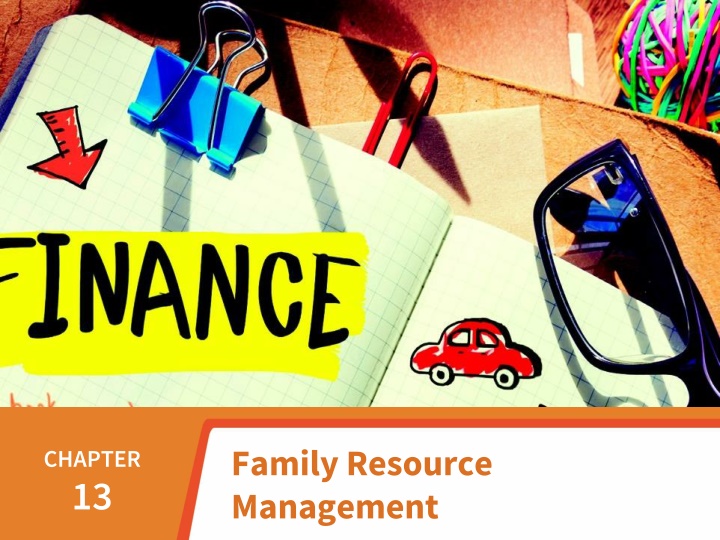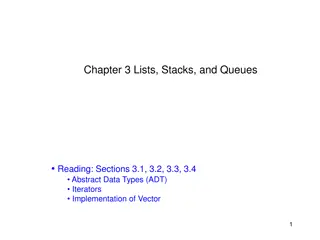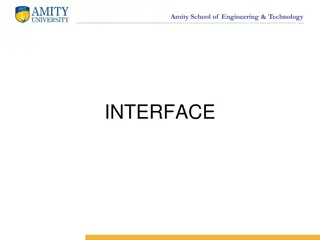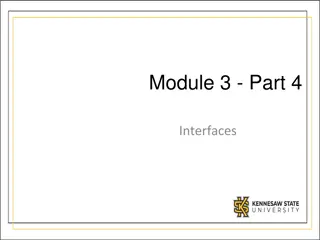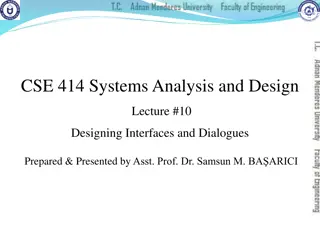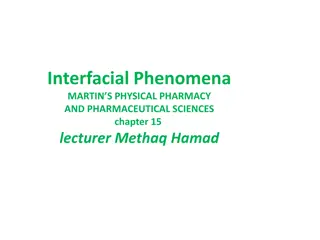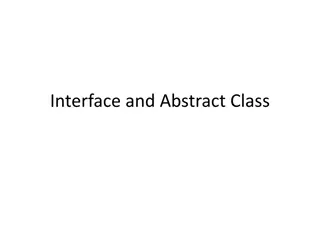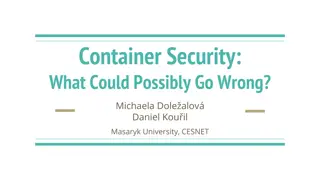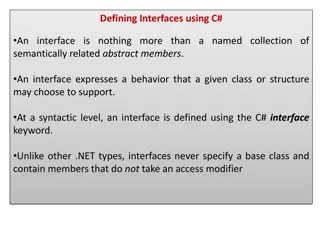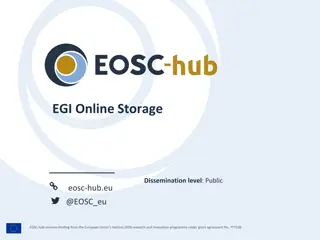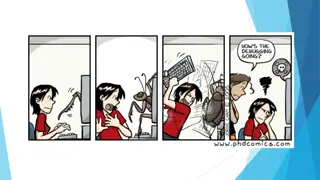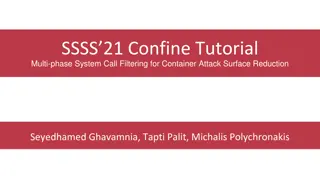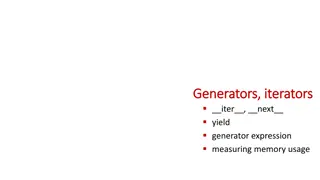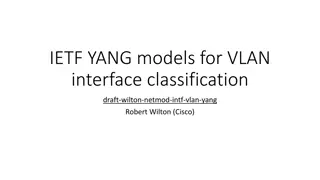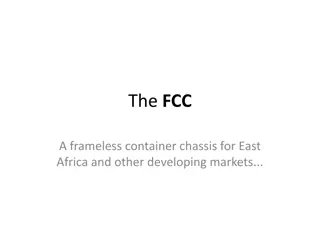Container-Level Interfaces and Iterators in C++
A discussion on container-level interfaces and iterators in C++, covering the structure, ownership, and functionality of containers, as well as the role of iterators in defining ranges of elements. The content emphasizes the relationship between algorithms and data structures, the states of iterators, and the properties of iterator intervals.
Download Presentation

Please find below an Image/Link to download the presentation.
The content on the website is provided AS IS for your information and personal use only. It may not be sold, licensed, or shared on other websites without obtaining consent from the author.If you encounter any issues during the download, it is possible that the publisher has removed the file from their server.
You are allowed to download the files provided on this website for personal or commercial use, subject to the condition that they are used lawfully. All files are the property of their respective owners.
The content on the website is provided AS IS for your information and personal use only. It may not be sold, licensed, or shared on other websites without obtaining consent from the author.
E N D
Presentation Transcript
13 Family Resource Management Family Resource Management CHAPTER 13 1
13 Family Resource Management Definitions Management is the effective use of available resources to handle or run something.It involves the choice, use and control of resources to achieve goals that will improve the quality of life. Resoures are things that are available to help in achieving a goal, e.g. people, time, money, skills and equipment. 2
13 Family Resource Management Definitions Resource management is using resources wisely in order to achieve goals. Family resource management is a system that assists the family by using resources. It involves planning, controlling and evaluating the use ofresources in order to fulfill goals and improve the quality of family life. 3
13 Family Resource Management The purpose of family resource management To make wise and efficient use of resources. To assist individuals and families to achieve goals. To improve the quality of family life. 4
13 Family Resource Management Key considerations in family resource management Conflict-solving: Listening, talking and compromising. Anticipating problems: Planning for all possibilities and having a back-up plan. Decision-making: Making decisions based on priorities and values. Time management: Individuals need to manage time in order to plan and carry out tasks efficiently. 5
13 Family Resource Management Family management systems Description System Looks at all tasks and available resources Priorities are assigned to each task through communication and decision-making After implementation, decisions are reviewed through evaluation Depends on and interacts with systems outside the family to achieve family goals, e.g. education system, health system and social welfare system All activities occur within the system s own boundaries, e.g. the self-sufficient Amish community A change in one area will affect another,e.g. unemployment Overall system Open system Closed system Contingency system 6
13 Family Resource Management Areas demanding management Financial management: Knowledge of budgeting, saving, bill payment, mortgages and pensions. Meal planning: Nutritional knowledge, decision-making, shopping and cooking skills. Cleaning: Room cleaning, laundry, house maintenance and gardening. Childcare: Care, safety and hygiene issues, and education. Conflict-solving: Listening, talking and compromising. Anticipating problems: Planning for possibilities. Decision-making: Making decisions based on priorities and values. 7
13 Family Resource Management Components of management There are three components/ stages of management: Inputs Throughputs Outputs 8
13 Family Resource Management Inputs These include anything brought into the system. They are made up of: Demands Needs are essential things (must have). Wants are desirable things (would like to have). Goals are what we strive to achieve in short, medium and long term. Values are beliefs of what is right and wrong. Resources Human resources people, their time, skills and knowledge. Material resources money, credit, books and equipment. Environmental resources physical like water, land, energy and temperature or social, economical and political institutions. 9
13 Family Resource Management Throughputs This is the action stage. Throughputs involve three processes: 1. Planning 2. Organising 3. Implementing 10
13 Family Resource Management Planning involves Identifying goals Identifying resources Gathering information Deciding on a course of action Considering alternatives Considering consequences 11
13 Family Resource Management Organising involves Deciding on the Order of Work Allocating Resources Allocating Work 12
13 Family Resource Management Implementing involves Control the activity/action to improve effectiveness Putting the plan into action Adjust process if necessary 13
13 Family Resource Management Outputs To access the end result of inputs and throughputs, it is important to ask: Have the demands been met or goals achieved? Were all resources used to their full potential? Was the procedure followed efficiently? Are you satisfied that the plan has worked? Are there any changes in family values or goals? Evaluation and feedback measures satisfaction levels in relation to inputs, throughputs and outputs, which will be used at the input stage in the future. The effective use of feedback contributes to the success of management systems. 14
13 Family Resource Management A management system Inputs Feedback Throughputs Outputs 15
13 Family Resource Management Attributes affecting management Size and composition of the family Stages in the life-cycle Employment patterns Socio-economic status Management of dual roles Gender roles Culture Values and standards 16
13 Family Resource Management Communicating Evaluating Planning Management Skills Implementing Organising 17
13 Family Resource Management Key words for revision Organising Outputs Planning Priorities Resources Resource management Skills Throughputs Time management Values Communicating Conflict-solving Decisions Evaluating Family resource management Goals Inputs Implementing Management 18
